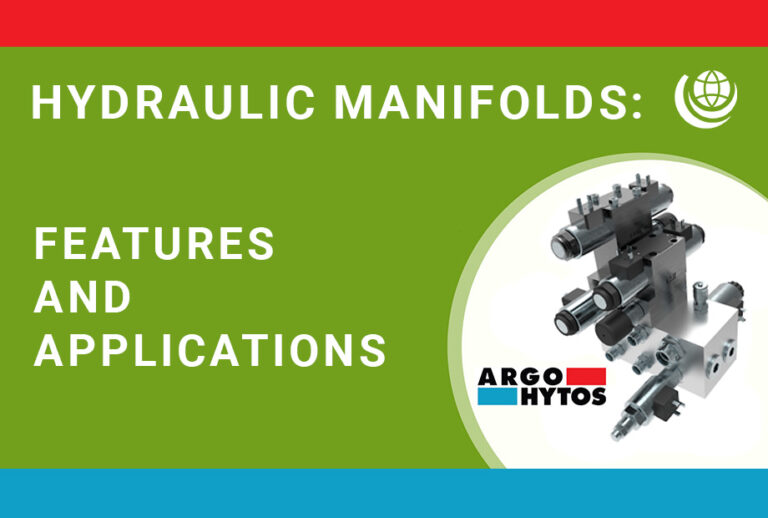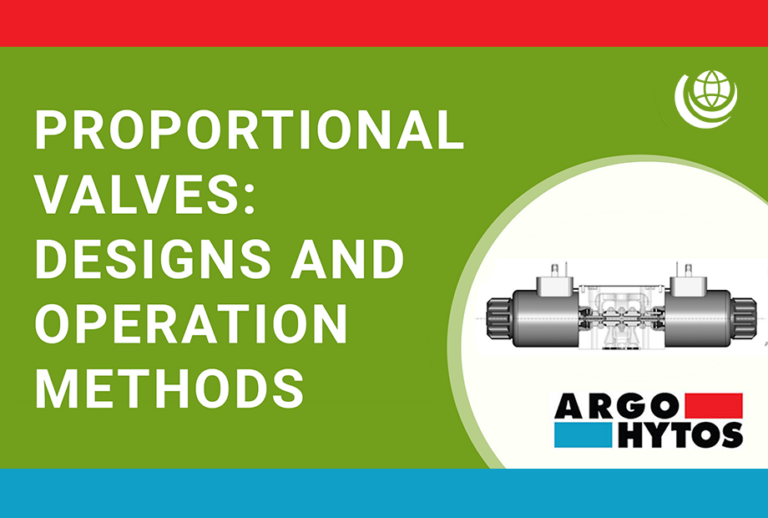A pressure reducing valve is used in line or hose systems. Also known as pressure regulating valves, these components regulate high or fluctuating inlet pressures in the system to a predefined outlet pressure. In this way, the valves keep the pressure constant.
Typical applications for pressure reducing valves include industrial applications, agriculture and construction machinery. Here, pressure reducing valves enable, for example, the regulation of clamping pressures, the force control of cylinder drives or the torque control of hydraulic motors.
In this article, reproduced with kind permission from ARGO-HYTOS, we look at how a pressure reducing valve works, the types available, what to consider when selecting the right valve and common functions and applications.
How does a pressure reducing valve work?
A required pressure is set via the valve. As long as the set outlet pressure is not reached, the valve will remain open. When the actual pressure reaches the predefined set pressure, the inflow from the pressure medium is closed.
In the pressure reducing valve, there is a continuous adjustment between the set pressure and the actual pressure downstream of the valve. The higher the pressure downstream of the valve, i.e. the outlet side, rises, the further the valve of the pressure reducing valve is closed. When the target outlet pressure is reached, the valve is completely closed.
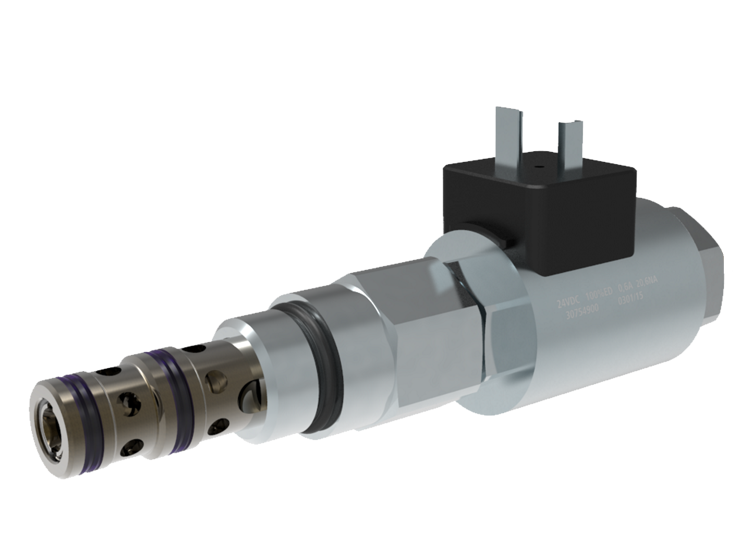
So-called pressure reducing valves with secondary pressure protection are a special design. With these valves, the maximum pressure at the valve outlet is limited. If the outlet pressure exceeds the set value, the valve opens the outlet in the direction of a connected tank.
Then the valve releases the medium from the line until the pressure in the line system drops. This continues until it is below the desired limit value. Subsequently, the valve closes the pressure relief function again.
An overview of the valve function
- The valves are mounted in line or hose systems;
- A pressure is preset via the valve;
- There is a continuous adjustment between the set pressure and the actual pressure;
- The higher the pressure behind the valve rises, the further it is closed
What types of pressure reducing valves are there?
Pressure reducing valves are divided into two groups according to their design principles: mechanically controlled and electrically controlled. The two groups can be subdivided again.
Mechanically direct controlled
Mechanically direct-controlled pressure reducing and relief valves such as the SP2A-A3/L from ARGO-HYTOS offer excellent stability over the entire volume flow range. They also ensure fast response times to pressure changes. As a control element, these valves use a spool on whose face the outlet pressure acts.
The pressure is adjusted by a spring on the opposite side of the spool. Mechanically direct-controlled valves allow precise pressure control, low pressure losses and small hysteresis. The possible flow rate is between 20 and 60 litres per minute, the maximum pressure between 320 and 420 bar.
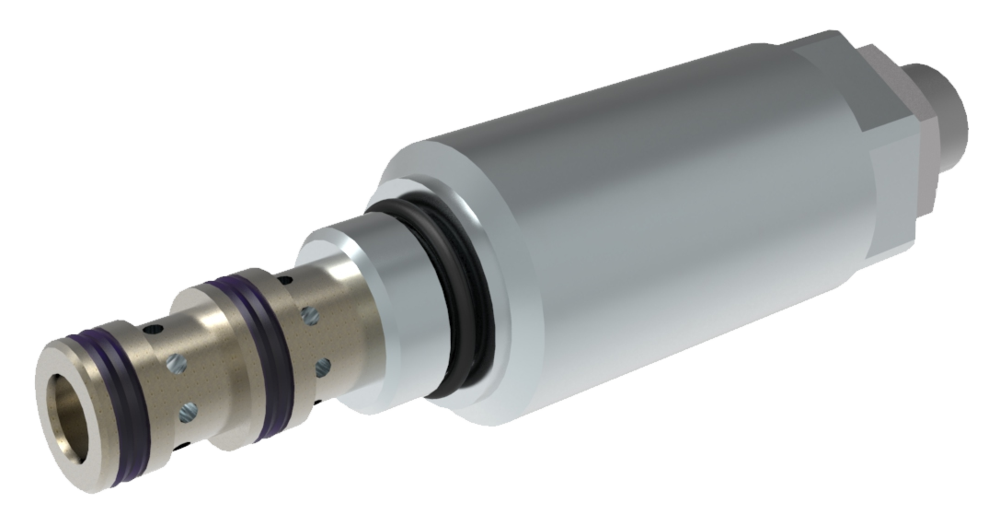
Mechanically pilot operated
Mechanically pilot operated valves are suitable for applications where high accuracy and repeatability are required. Precise pressure control, low pressure losses and small hysteresis characterize the mechanically pilot operated valves. The possible flow rate is between 60 and 150 litres per minute, the maximum pressure between 320 and 350 bar.
Electrically proportional direct operated
Electrically proportional direct operated valves for pressure control are used, among other things, to control clutches in gearboxes of mobile machines. One example is the PP2P3-W3 from ARGO-HYTOS. The valves in piston design offer excellent stability over the operating range with the fastest response to load changes.
With this design principle, the reduced outlet pressure is proportional to the control flow. This ensures particularly accurate pressure control and excellent repeatability. An integrated relief function reliably protects against pressure peaks. The possible flow rate is between 20 and 40 litres per minute, the maximum pressure is 350 bar.

Electrically proportionally pilot controlled
Electrically proportional pilot operated valves such as the SP4P2-B3 consist of a pilot stage with valve and a main stage with threaded connection. The valves control the pressure at the consumer port continuously and proportionally to the control signal at the input. A flow rate flows through the pilot stage. It is required for controlling the output pressure and maintaining the set, reduced pressure.
In the event of an overload of the consumer, the circuit is protected against damage by high pressure. The design principle is characterized by the most accurate pressure control and low pressure losses with small hysteresis, as well as high flow rate performance. The possible flow rate is between 40 and 60 litres per minute, the maximum pressure up to 350 bar.
ARGO-HYTOS mechanically and electrically controlled valves are available either as screw-in valves or plug-in valves for block installation. Mechanically controlled valves from ARGO-HYTOS can still be used via intermediate plates for vertical stacking in accordance with ISO4401.
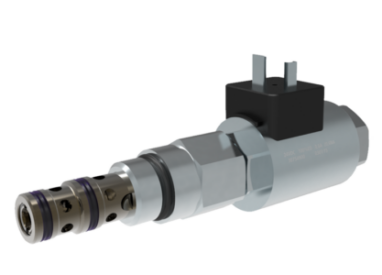
How to choose the right valve
There are four parameters to consider when selecting the appropriate variant of pressure control valves for specific applications, the:
- pressure range to be processed at the inlet of the valve;
- required control pressure at the outlet of the valve;
- flow rate;
- desired adjustment options: mechanical or electrical.
What functions do these valves perform in a machine?
ARGO-HYTOS pressure reducing valves perform a wide variety of tasks in mechanical and plant engineering, and in vehicle or construction machinery technology. A typical application in mechanical engineering is the control of clamping pressures, for example for hydraulic chucks on lathes. They are also used for clamping tools in collets.
In vehicles, pressure reducing valves are used to actuate the brakes or clutch. The valves are also commonly used for force control of cylinder drives or torque control of hydraulic motors. High-quality ARGO-HYTOS pressure reducing valves are also used for the adjustment of pressure forces, for weight compensation or the relief of heavy machine parts.
Which industries use ARGO-HYTOS valve technology?
Pressure reducing valves, proportional valves or throttle check valves from ARGO-HYTOS are used in a variety of industries and sectors.
Pressure reducing valves are ideally suited for all applications where maximum precision and reliability are required. This is ensured by precise control of the outlet pressure, compact designs and high-precision manufacturing. In addition to machines, plants and equipment in production and manufacturing, ARGO-HYTOS valves also work in agricultural and construction machinery or municipal vehicles.
Please contact our award-winning team for technical advice and configuration options on ARGO-HYTOS pressure reducing valves – we’ll be delighted to help!
More Educational Content from Argo Hytos in our Fluid Power Technical Knowledge Hub…
Hydraulic Manifolds: Features and Applications
Hydraulic manifolds consist of a large number of integrated valves housed in a single casing. This compactness aids assembly, reduces leakage points and enables optimized hydraulic flow.
Read on to learn how these high-precision components influence the operation and performance of machines and systems.
Learn MoreProportional Valves: Designs and Operation Methods
Numerous applications and systems require a highly precise adjustment of the pressure and/or the volume flow. This task is performed by proportional valves.
In this article, we look at how proportional valves are used, what types are available and how they are connected and controlled.
Learn MoreHow to use Overcentre Valves Correctly
In the world of hydraulic engineering, overcentre valves provide precise control and regulation of loads.
They provide three essential functions in one component: check valve, pressure relief and cavitation protection. This combination enables efficient, safe and powerful handling of hydraulic systems.
Learn More



